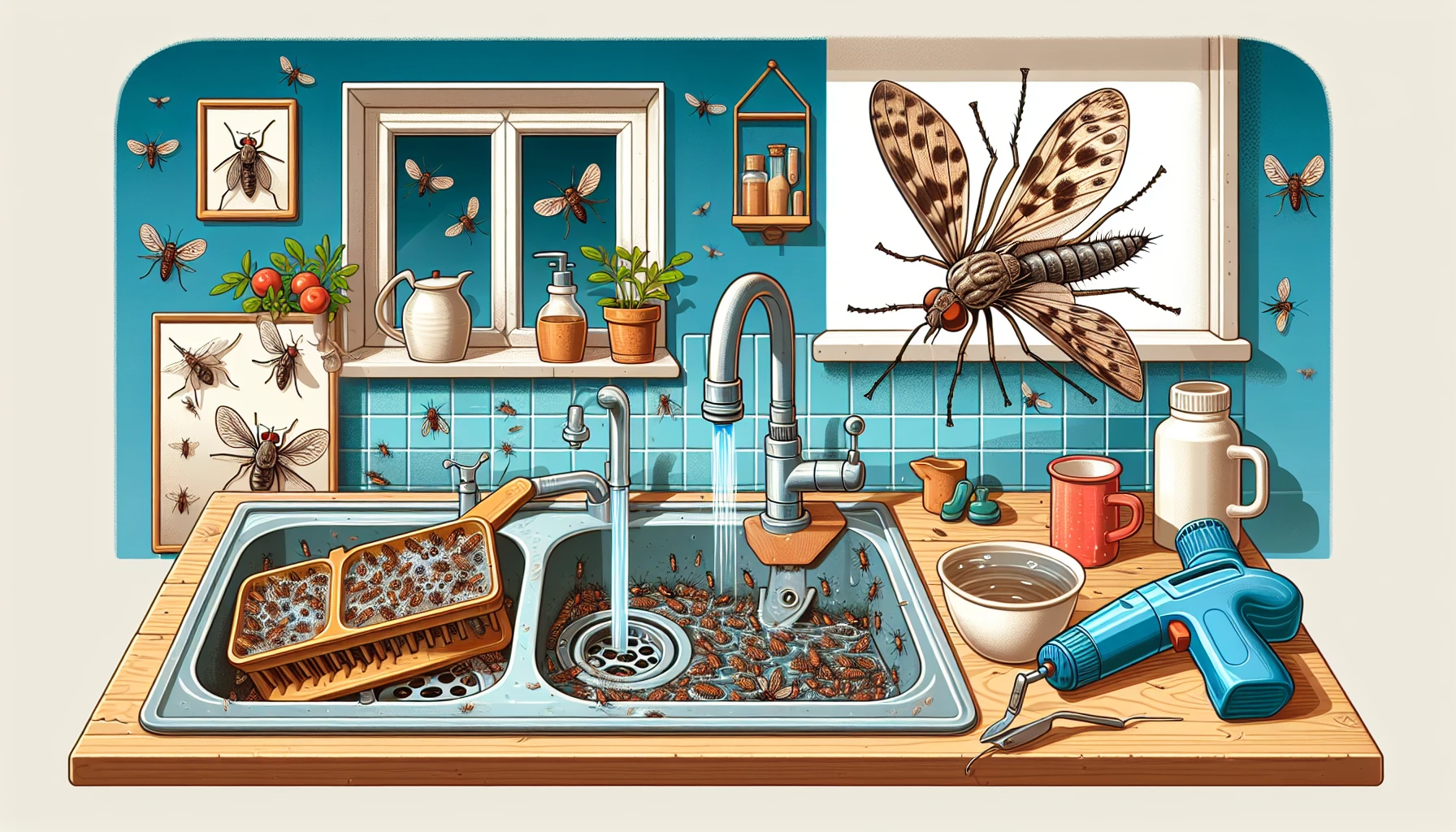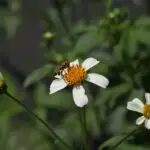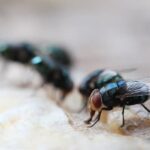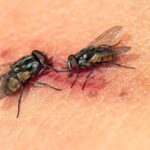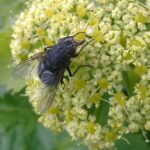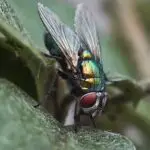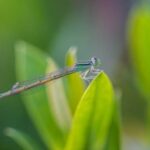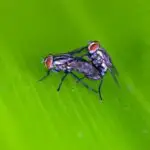Drain Flies Demystified: Banishing Pesky Invaders from Your Home
Unveiling the Drain Fly: An Intriguing Introduction
Imagine this: You’re brushing your teeth and you spot a tiny, fuzzy insect flitting around the sink – meet the drain fly, also known as a sewer gnat or moth fly. These little creatures are the uninvited guests in our homes that seem to appear out of nowhere. But what are drain flies, really? Let’s shed some light on our diminutive housemates.
Drain flies boast a unique appearance that makes them stand out from your typical housefly. Picture a little bug cloaked in a dusty, moth-like fuzz, sporting a pair of wings that seem larger than life for their tiny bodies. With their distinctive heart-shaped wings, they flutter about more clumsily than their zippy fly cousins, giving you just enough time to get a good look. Though minuscule in size, typically around 1.5 to 5 mm in length, these critters make their presence known through their sheer numbers and relentless nature.
These pests don’t just visit; they take up residence in the most unglamorous places of our homes—the drains. Why, you ask? Drain flies are attracted to the moist, organic debris found within our plumbing, making it the perfect breeding ground. These unsung opportunists lay their eggs in the sludge that clings to our pipes. Within a week, a new generation of flies emerges, ready to take on the world—or at least your bathroom and kitchen.
In their quest for moisture, they’re not just sticking to the drains. Houseplants, overripe fruit, and any standing water provide a haven for drain flies to thrive. Keeping your living space dry and tidy can be a simple yet effective first strike in the battle against these persistent invaders. Remember, they’re not only a nuisance but also potential carriers of unwanted microbes hitching a ride on their hairy little bodies.
If you’ve ever thought that drain flies are solo performers, think again. They’re social insects that enjoy swarming together, often in the evening, around your sink or shower. But before you resign yourself to sharing your home with them, take heart in knowing that with the right measures, you can show them the door for good.
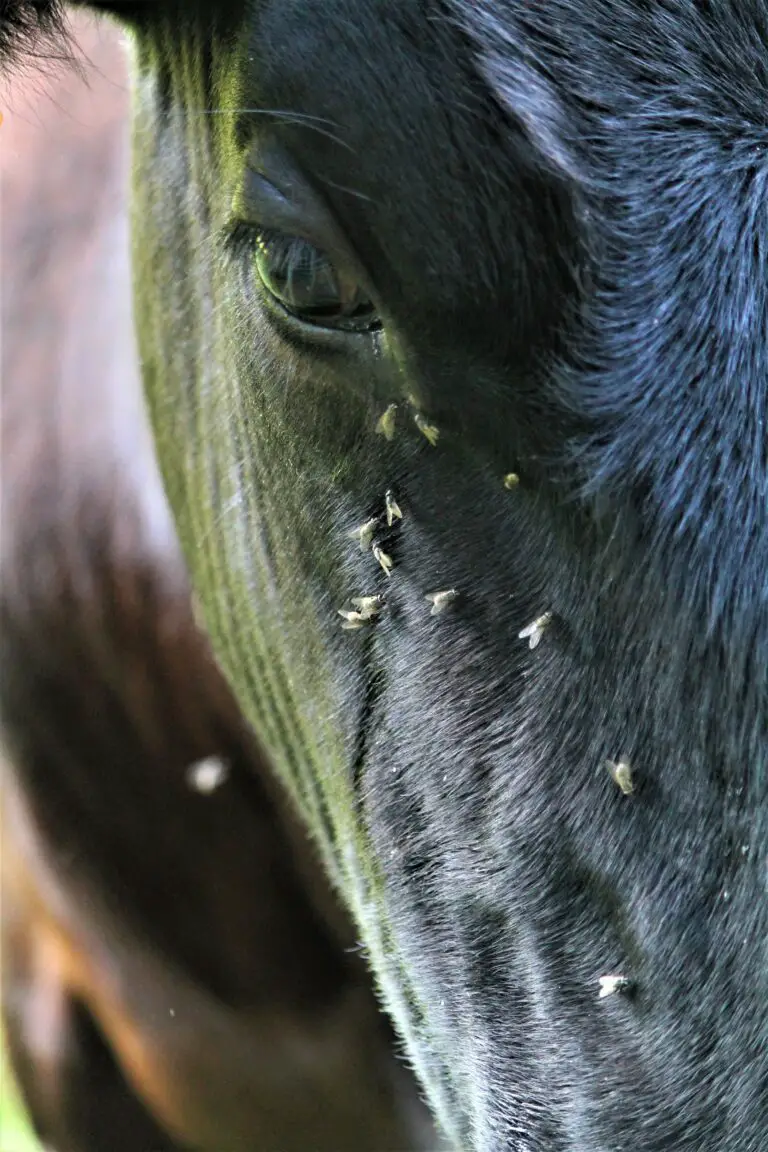
Stay with us, as in the following sections we’ll dive deeper into understanding these pesky inhabitants and arm you with the knowledge to reclaim your home, making it a drain fly-free zone.
The Secretive Life Cycle of Drain Flies Unraveled
Step into the shadowy world of the drain fly, an elusive squatter in our homes, often spotted fluttering near the sanctuary of our sinks and showers. The life cycle of a drain fly is a fascinating, if unwanted, marvel of nature, taking place right under our noses—or, more aptly, right inside our drains. Unlocking the mysteries of this cycle can give us the upper hand in showing these pesky invaders the door.

The saga begins in the slimy film that coats the pipes beneath our very feet. It’s here that the drain fly mothers lay their eggs, choosing a nursery teeming with decaying material and organic filth— a veritable buffet for the voracious appetites of their larvae. Shunned by sunlight, they thrive in the gelatinous gunk, feasting and growing in the unseen depths of our plumbing.
Larvae: Hidden Menaces in the Muck
Dig just beneath the surface, and you’d uncover legions of drain fly larvae, minuscule wiggler citizens of the grime. Resilient and resourceful, these larvae have adapted to survive in less than hospitable quarters, and they do so with gusto. Within 9 to 15 days, the rotund larvae prepare to take a leap of faith, transforming into pupae, the transition marking the prelude to their impending aerial freedom.
Pupae: A Transformation Shrouded in Secrecy
Just as a caterpillar blooms into a butterfly, the drain fly pupae stage is one of metamorphosis. Shrouded by the filmy curtains of their underworld, drain fly pupae quietly bide their time, mustering the strength for their dramatic debut. This relatively quick stage lasts around 20 to 40 hours, and then… a revelation. They emerge, fully equipped with a pair of delicate, gossamer wings ready to flutter into our airspace.
And thus, an adult drain fly is born. Beating their wings up to 200 times per second, they can seem less like pests and more like miniature helicopters seeking a landing pad. As adults, their primary mission? To reproduce and ensure their offspring have a sewage-laden oasis to call home. However, their lifespan as flying adults is brief—only about two weeks. It’s a race against time to perpetuate the cycle, a cycle we’d prefer to interrupt rather than host.
By understanding the life cycle of drain flies, effective strategies can be developed to cut this cycle short. A pinch of prevention, a sprinkle of timely intervention, and a dash of persistence might just be the cocktail we need to banish these drain dwellers. Take note: your plughole might be bracing for the next generation of drain flies, unless you act to demystify—and destroy—their secretive lifecycle.
Pinpointing the Problem: How to Identify a Drain Fly Infestation
Some invaders are loud and hard to miss, but drain flies, also known as moth flies, prefer the covert approach. Unlike the showy moth or buzzing housefly, these diminutive pests often go unnoticed until they’ve claimed squatters’ rights in your pipes. So, how do you lift the veil on these sneaky inhabitants?
First off, drain flies are quite the masters of disguise, bearing a striking resemblance to their cousins, the fruit flies and fungus gnats. With their fuzzy bodies and wings, they might even pass for an innocent moth if you don’t look closely. But don’t let their unassuming size fool you; a closer inspection will reveal their true identity — with wings like tiny patterned cloaks and distinct vein patterns stark against the light.
Signals of an infestation are as subtle as the flies themselves. Have you noticed an unusual gathering around your sink, shower drain, or perhaps in the bathroom during the night? Is there a persistent, light fluttering near your indoor plants or the trash can? These could be the first inklings of an issue. A professional guide on drain fly identification might reveal the telltale signs that your drains have become a drain fly disco.
For a hands-on approach to distinguishing these pests and comprehending their behavior, there’s nothing like seeing them in action. Here’s where a visual aid can be of immense help:
Understanding the habitat of these pesky invaders is crucial. They boast a larvae lifestyle that rivals any reality TV show filled with slime and muck. Any place with stagnant water or decaying organic matter becomes a drain fly’s prime real estate. It’s here they breed and brood, turning your plumbing into a family home.
If you’re besieged by these bothersome buzzers, take heart; you’re not defenseless. Familiarizing yourself with effective strategies for managing pests will equip you with the necessary tools for reclaiming your residence from these uninvited guests. Remember, as unappealing as their presence may be, knowledge and preparation are key in turning the tide against the drain fly dilemma.
Natural Vs. Chemical Warfare: A Comparative Analysis on Eradicating Drain Flies
Welcome to the battlefront of your own home, where the unassuming drain flies have taken up residence. They’re not paying rent, and certainly not welcome. So, what’s the best course of action? Do we summon the strength of chemical compounds, or do we look to Mother Nature for a more subtle and gentle eviction? Let’s deep dive into the surprising arsenal each side offers to combat these winged squatters.
The Nitty Gritty of Natural Remedies
When it comes to natural remedies, think of it as guerrilla warfare against the drain fly battalion. Picture this; you’ve just poured a homebrewed concoction down the drain made from the finest array of household products. Vinegar, baking soda, and boiling water become your allies in creating a volcanic eruption within the drain flies’ covert bunker. The aftermath? A cleaner drain and fewer flies, all while keeping your conscience and home environment as pristine as a nature reserve.
But it’s not all sunshine and rainbows. While you pat yourself on the back for not introducing toxic chemicals into your home, you quickly realize that your crafty trap made from rotting fruit covered with plastic wrap, just isn’t the mass drain fly exodus you’d hoped for. They’re tenacious little critters, and sometimes natural methods require patience and repeated assaults.
The Pros and Cons of Chemical Solutions
Now let’s switch gears and talk chemicals. When you unleash the power of insecticides, you’re opting for the shock-and-awe strategy. It’s like calling in the big guns; the chemical sprays and gel baits declaring all-out war on the drain flies. They’re efficient, they’re lethal, and let’s face it, oddly satisfying as you watch the enemy fall. However, this power comes with great responsibility and potential peril.
Here’s the kicker: those formidable chemical agents don’t just obliterate the drain flies; they may also take a toll on your health and the well-being of your household pets. Plus, consider the long-term impact on our planet. Do we really want our waterways to become chemical soups just for the sake of convenience?
While you ruminate on that, let’s not forget that chemical solutions often come with a scent that can leave your nostrils flaring and your home smelling like a science lab. And the unseen enemy? Those pesky flies that hide and survive are likely to develop resistance, rallying their forces for a sequel nobody asked for.
To find more information on keeping your home pest-free using safe and efficient methods, check out Winning the Battle Against Pests, where strategic tactics are discussed to maintain the peace within your humble abode.
In conclusion, whether you choose natural or chemical weapons, understanding the pros and cons is vital. It’s about stroking the right balance between effectiveness, health, and environmental considerations. Make your choice wisely, and may the odds be ever in your favor in the epic saga of “Drain Flies Demystified.” But hey, that’s a story for another day.
Home Remedies: The Eco-friendly Approach to Combat Drain Flies
Ever noticed tiny, pesky winged visitors hovering above your drain? Yep, those are drain flies, and while they might have a knack for performing disappearing acts during the day, come nightfall, they’re back with a vengeance. But fear not! You’re about to become an eco-friendly drain fly whisperer with some simple, yet astonishingly effective natural remedies.
Unlocking the Power of Vinegar and Baking Soda
First up in our arsenal is the dynamic duo of vinegar and baking soda. This isn’t just for science fair volcanoes—this combo fizzles right through the gunk drain flies adore. Just pour half a cup of baking soda down the drain, followed by a cup of vinegar. Cover the drain to keep the magic contained and let it sit overnight. In the morning, flush it out with boiling water. It’s like sending a clear message: “Party’s over, flies!”
Essential Oils: The Aromatic Fly Deterrent
Lavender, eucalyptus, peppermint—oh my! Essential oils aren’t just for spa day. Drain flies detest the strong scents, which is great news for us. Mix a few drops with some hot water and dish soap for a spray that not only freshens up your home but tells those drain flies to buzz off.
Sweet and Sticky Trap
No need for complicated gadgets; a simple jar can become the drain fly hotel from which they never check out. Coat the inside of a jar with a tantalizing mixture of sugar, water, and apple cider vinegar, then stretch some plastic wrap tight over the top and poke tiny holes. The flies can’t resist the sweet scent and will dive in, but—oops!—no way out.
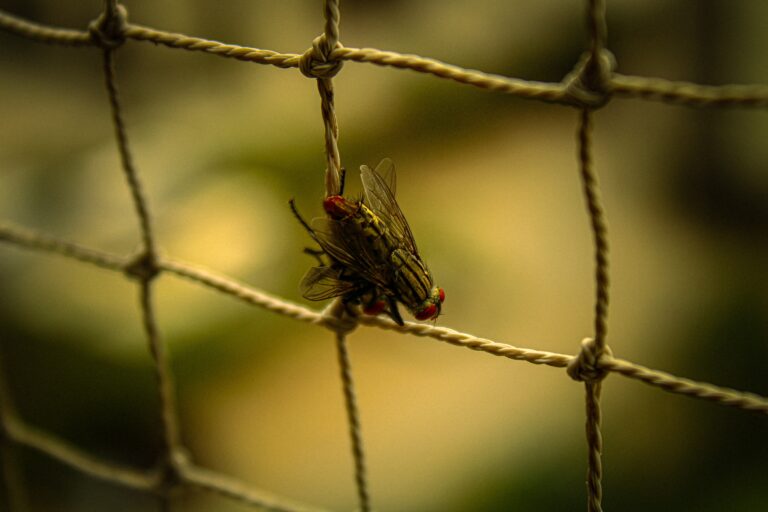
And just like that, you’re well on your way to clearing out those drain flies with methods that are gentle on the planet but tough on pests. Remember, consistency is key. Use these remedies regularly, and soon your drains will be nothing but sparkling waypoints for water, not flyways for unwanted guests.
When to Call the Pros: Exploring Professional Drain Fly Extermination
Encountering a battalion of drain flies skittering about your sink can be as unsettling as it is unsanitary. These tiny winged nemesis love moisture and organic material, finding a paradise in the sludge of your drains. Initially, you may venture into battle equipped with a plunger and a bottle of all-purpose cleaner. However, there comes a decisive moment when amateur tactics falter, and it’s time to summon the cavalry — professional pest control.

Recognizing when to call the pros is crucial. It begins with vigilance; are the drain flies returning repeatedly, despite thorough cleaning? Have you noticed an increase in the number of these pesky invaders after every remedy attempt? These could be signs that the infestation is beyond a simple DIY solution, and it’s time to consider professional extermination services.
Professional pest control offers a systematic approach that starts with identifying the exact extent and source of the infestation. Unlike the hit-or-miss strategies that we might employ, experts will perform a methodical drainage sweep, leaving no pipe unturned.
What to Expect from the Extermination Process
When you decide to rope in the professionals, expect a thorough inspection of your home’s drainage system. Experts come armed with specialized tools and an arsenal of environmentally safe insecticides designed to obliterate drain flies at the source. Real-life examples include the duo of drain gels and bio-enzymatic cleaners, which break down organic build-up, starving the flies of their breeding ground and buffet.
Moreover, professional exterminators use a combination of mechanical cleaning and insecticidal treatments. This often includes dismantling drain traps and using cameras to peer into the dark recesses of your pipes. The goal is not just to eradicate the flies but to comprehensively remove the environment that sustains them.
Armed with knowledge and cutting-edge technology, pest control professionals set forth a plan of attack that is tailor-made to your unique situation. Whether it’s a kitchen sink that sees a myriad of food scraps or a seldom-used basement drain posing as a fly hotel, the pros assess and act with precision. This personalized touch, coupled with expert execution, is what decisively turns the tide in the war against drain flies.
Simple Yet Effective: Enticing Homemade Drain Fly Traps
When it comes to pesky drain flies, you might feel at your wit’s end. But fear not! The solution might be as close as your kitchen cabinet. Let’s talk about crafting your own drain fly trap – a straightforward and cheaper alternative to store-bought options.
Imagine a Sunday afternoon, you’re in the middle of preparing a hearty family meal, and there they are—the unwelcome flutter of wings around your sink. Drain flies can be true nuisances, but did you know you can convert a common mason jar into a drain fly detention center? You heard it right! With some sugar, water, and a drop of dish soap, a simple jar can become an effective trap.
But why stop there? Let’s get inventive! Do you have any overripe fruit? Perfect. Chop it up, place it in a bowl, cover it with plastic wrap, poke some holes, and wait. Rest assured, those flies won’t be bugging you much longer. This isn’t just talk; it’s a tried-and-tested method by many homemakers who have faced the drain fly dilemma head-on.
Perhaps you’re a fan of wine—well, your fruitless companions are too. A little leftover vino in a bottle can act as a tantalizing lure. Just add a funnel to the neck, creating a one-way ticket to a grape-scented end for the flies. Sit back and watch as your DIY trap does the work while you enjoy a glass of the same—fly-free, of course.
Now, let’s take a peek at a visual guide that can aid you further in understanding the art of homemade fly traps. It’s one thing to read about it; it’s another to see it in action. Watch as this tutorial brings the concept to life and can even spark some inspiration for your next DIY fly trap project.
In conclusion, while drain flies can be a pesky problem to have around the house, with a bit of creativity and everyday household items, you can bid farewell to these unwanted guests. Remember, the key is to be patient and consistent with your homemade traps, and soon enough, you’ll reclaim your home from the drain fly invasion.
Long-Term Solutions: Strategies for Keeping Drain Flies at Bay
Engaging in the unending battle with drain flies can be daunting, but fear not! We’re about to equip you with pivotal long-term strategies that will fortify your home against these unwelcome invaders. It’s not merely about winning the skirmish; it’s about securing your domestic tranquility for the foreseeable future. Let’s embark on this mission to create an inhospitable environment for drain flies, once and for all.
Maintaining a Fortress: Daily Habits to Deter Drain Flies
Just like brushing your teeth prevents cavities, regular sink and drain maintenance is the key to keeping those pesky drain flies at bay. Start with simple yet powerful habits, such as boiling water down the drain to scald away the gunk that these critters love. Incorporate bi-weekly vigilance with a mixture of vinegar and baking soda—nature’s version of a drain fly eviction notice.
Picture this: It’s a warm summer evening, and you’re peeling vegetables for dinner. Those scraps? They’re a gourmet feast for drain flies. Preventative measures such as composting or tightly sealing organic waste can make your kitchen less appealing to these uninvited diners. It’s the difference between a five-star rated fly Airbnb and a no-vacancy sign.
Mastering the Art of Cleanliness: Maintenance Tips
Cleanliness might be next to godliness, but it’s also a formidable opponent of the drain fly. Keep your drains devoid of organic materials where drain flies lay their nefarious eggs. Regular cleaning under appliances and in the recesses of your kitchen ensures that every potential breeding ground is interrupted. Imagine the drain fly’s disappointment when it finds that the spill behind the fridge has already been handled by your diligent cleaning routine!
Every now and then, roll up your sleeves for a deep dive into your drains. Tools like a plumber’s snake not only tackle immediate blockages but also disrupt the cozy habitats that drain flies cherish. The life of a drain fly is short but not sweet when you’re on patrol.
Home Improvements: The Drain Fly Deterrent Blueprint
Sometimes the ultimate solution lies in upgrading your fortress. Are your pipes old and leaky? It’s an open invitation. By fixing plumbing issues and ensuring pipes are sealed and in good repair, your home becomes the equivalent of a medieval castle—impenetrable to the drain fly horde. Consider installing fine mesh screens over drains; these act as a portcullis, guarding the gateway to fly paradise.
Real-life examples abound of homeowners who’ve turned the tide against drain flies with a little investment in their infrastructure. Think of that neighbor who replaced their damp, old basement carpets with sleek, easy-to-clean tiles and how they haven’t seen a drain fly since. It’s these kind of clever modifications that can make all the difference in the perpetual quest for a fly-free abode.
And now, let’s introduce the unsung hero in our narrative—regular inspections. Keeping an eagle eye on potential problem areas ensures that even the slightest sign of a drain fly is met with swift action. Scheduling annual inspections by professionals can keep your home’s defenses robust and reactive.
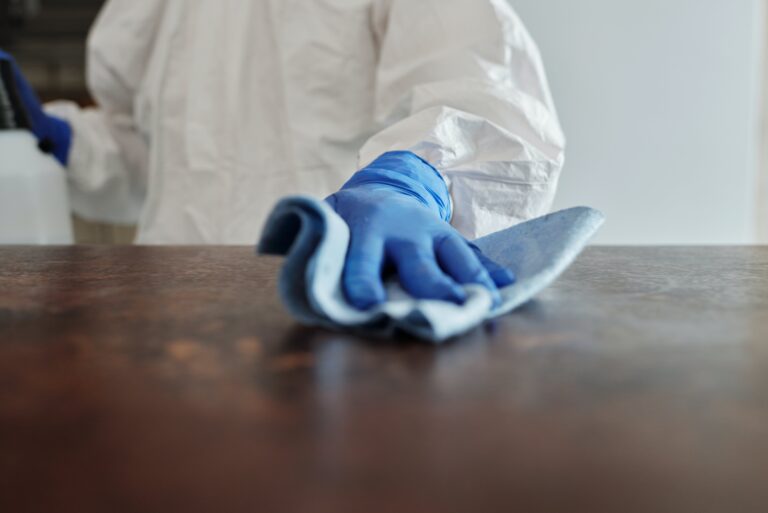
Embrace these strategies, and you’ll be well-armed in the fight against drain flies. While the occasional scout fly may still breach your defenses, with vigilance and foresight, your home will remain largely a no-fly zone. Don’t give drain flies an inch of standing water to call their home, and you’ll reclaim your domain for good.
Why It Matters: The Importance of Addressing a Drain Fly Problem Promptly
Imagine the frustration of a homeowner when they discover a cloud of tiny flies buzzing around their bathroom sink or kitchen drain. Drain flies, with their off-putting presence, are not mere annoyances. They signal a deeper hygiene problem that demands immediate attention. If left unaddressed, these tiny invaders can quickly go from a minor nuisance to a full-on infestation.
Drain flies love the slimy film that accumulates in the drains due to organic materials and stagnant water. They lay their eggs there, and within days, a new generation of flies emerges to join the airborne armada. This rapid breeding cycle means that a few unnoticed flies can become hundreds in what seems like no time, turning your home into an unwelcome fly nursery.
But it’s not just about the numbers. Drain flies carry pathogens on their bodies from the unhygienic environments they thrive in. Each time they land on your clean surfaces, they’re potentially depositing bacteria and viruses. Imagine preparing your favorite dishes on a countertop visited by these unwelcome guests. Not a pleasant thought, right?
Addressing a drain fly problem promptly isn’t just critical for your home’s cleanliness—it’s a matter of health. With each flutter of their wings, drain flies can exacerbate asthma and trigger allergies in susceptible individuals. The connection between these pests and potential health risks underscores why a swift response is necessary.
There’s also the psychological impact to consider. Our homes are meant to be sanctuaries. A drain fly infestation, however, transforms your personal space into a source of anxiety and discomfort. Visualizing a bug-free home isn’t just wishful thinking; it’s a fundamental aspect of comfortable living.
Fortunately, dealing with drain flies can be a straightforward affair if tackled diligently. Whether it’s employing home remedies or calling in experts, the key is to act swiftly. Preventing their breeding grounds from thriving can cut the cycle short, saving you from more extensive trouble down the line.
For those who have witnessed a chronic invasion or battled with these persistent pests, the importance of early intervention is clear. It’s not merely a fight against flies; it’s a proactive move to protect your health, your home’s integrity, and the peace of mind that everyone deserves within their own walls.
FAQs About Drain Flies: Expert Answers to Common Concerns
Got questions about drain flies buzzing around your head? We’ve all been there – you find a swarm of these pesky insects hovering over your sink, and suddenly you’re part of a real-life ‘Flynado.’ Let’s get into some of the most common head-scratchers about these winged nuisances and clear up the fog with expert-backed insights.
What Exactly Are Drain Flies?
Imagine this: You’re cleaning your kitchen, and you notice tiny, moth-like creatures taking a pool party in your sink. Those are drain flies – fuzzy little critters that love the damp and can often be seen doing the breaststroke in your plumbing fixtures. Though they’re generally more of a nuisance than a hazard, knowing how to keep your home fly-free is crucial for your comfort and sanity!
Why Are Drain Flies Attracted to My Home?
Think of your drain as a spa retreat for drain flies. It’s got all the amenities: moisture, organic material, and a nice dark environment. If you’ve left the “Welcome” mat out with slow-moving drains or gunk build-up, don’t be surprised if drain flies check in for an extended stay. Keeping things clean and flowing smoothly is your ticket to bidding these unwelcome guests goodbye.
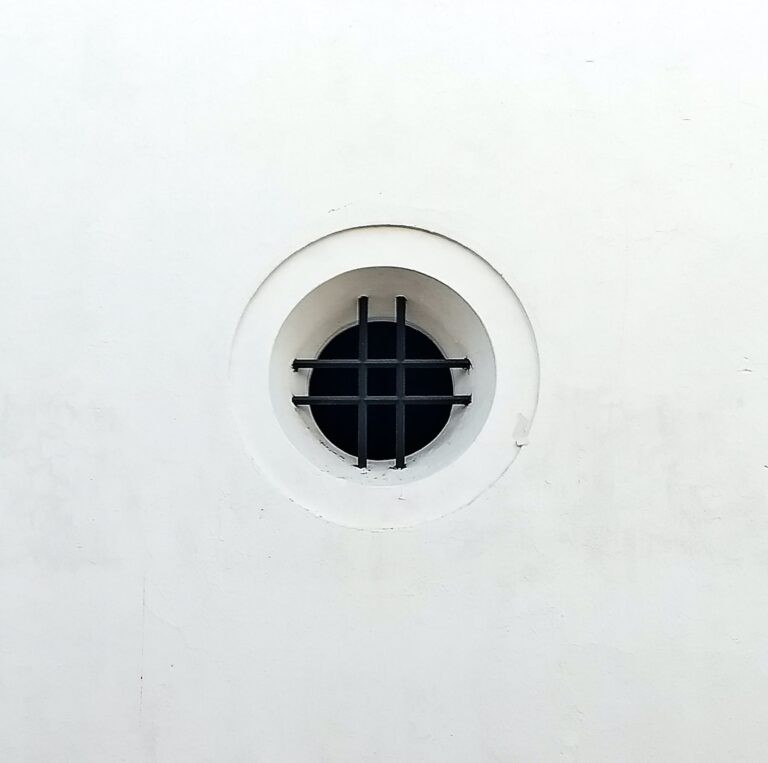
How Do I Prevent Drain Flies From Taking Over?
Prevention is like setting up a no-fly zone in your home. Regularly clean your drains with a non-toxic cleaner or a simple mixture of vinegar and baking soda. Don’t forget to give those pipes some elbow grease with a brush to disrupt any fly-themed house parties trying to start up. Remember, an ounce of prevention is worth a pound of pest control!
Can Drain Flies Cause Damage or Spread Disease?
While drain flies aren’t the culprits behind any major diseases like some of their other fly relatives, they can carry bacteria and pathogens from their breeding grounds – which isn’t exactly appetizing. Plus, let’s be honest, a cloud of flies isn’t the best look for your pristine kitchen. So, keep things clean, and you’ll keep the flies and any potential germs at bay.
Are There Natural Ways to Eliminate Drain Flies?
Absolutely! If the idea of using harsh chemicals sends you flying in the opposite direction, you’ll be happy to hear that natural remedies are here to save your day. Try pouring boiling water down the drain or setting up a vinegar and dish soap trap to catch those pesky fliers. Mother Nature’s got your back when it comes to eco-friendly fly control.
What Should I Do If My Drain Fly Problem Persists?
If you’ve tried all the DIY tricks and still see drain flies hanging around like they own the place, it might be time to call in the pros. Persistent problems could indicate a deeper issue, like a hidden leak or a clog stirring up serious fly rallies. A professional can get to the root of the problem, ensuring your home gets back to being the peaceful, fly-free zone you deserve.
Remember, staying vigilant and spotting the signs early can help you avoid a full-on drain fly drama. Keep your drains clean, and don’t let these fuzzy menaces turn your home into their favorite hotspot!
